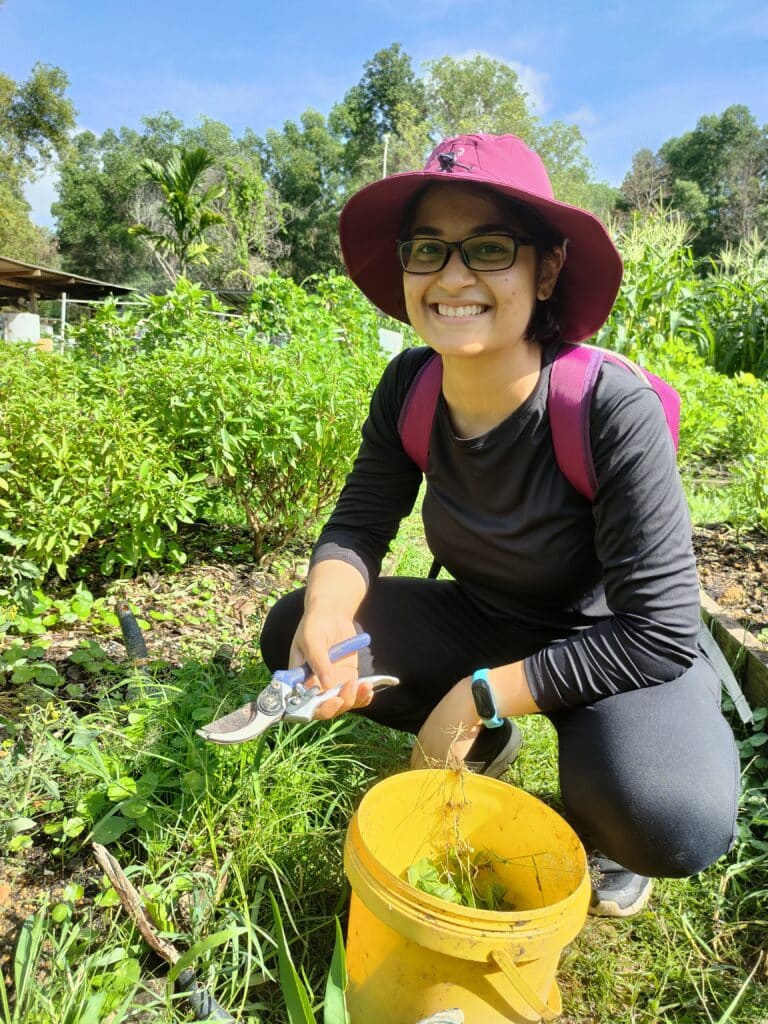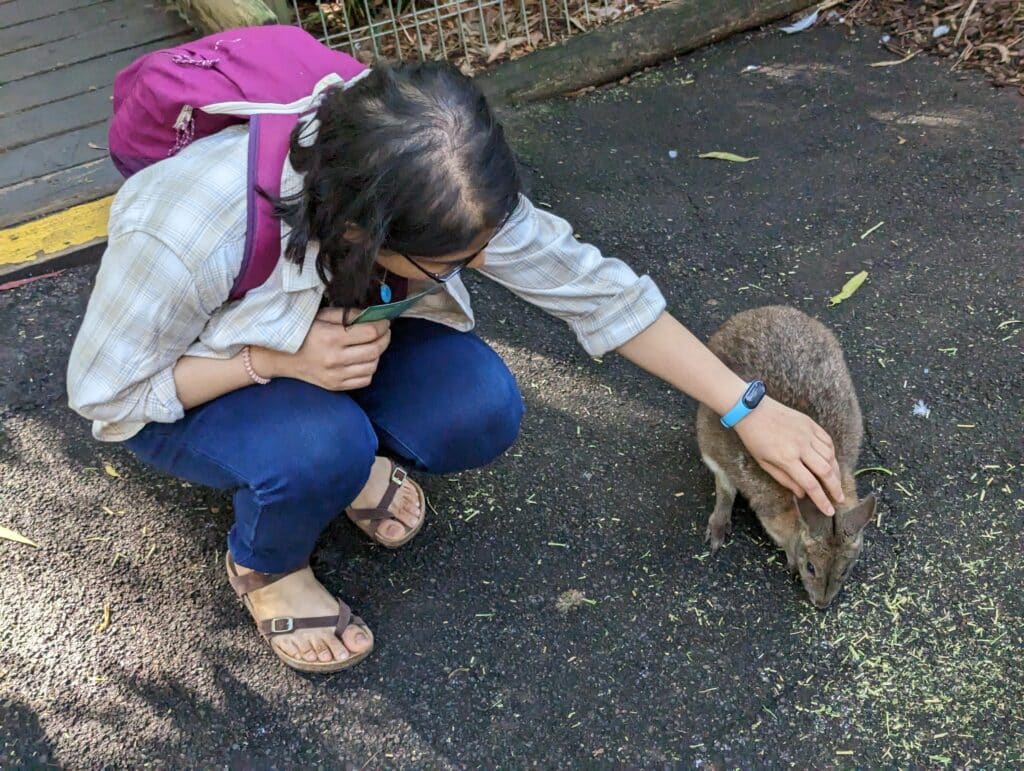
Choose Your Language:
Posted by: The Sumaira Foundation in MOG, Patient, Voices of NMO

It was December 27, 2022, two days after a quiet but emotionally stressful Christmas in India when I noticed a blurry white spot in my left eye which showed up occasionally…
This was my first time flying internationally after COVID, and to be safe, I decided to take a booster COVID vaccine, which happened to be the mRNA type, whereas my previous vaccines were not. I had also really missed my grandmother’s cooking and those special “soul” foods for 3 years, and so decided to eat all the gluten and dairy full food on vacation.
While caring for my grandmother in India, I decided to hold off on getting medical care until I returned to Malaysia where I currently live and have medical insurance coverage. I thought it was some type of unique eye infection I caught while in India, and would resolve on its own – nothing to get too worried about.
After getting back to work, I noticed the spot was becoming bigger and the sudden increase in screen time made my left eye feel even more uncomfortable and painful. So around 3 weeks after I initially noticed it, I decided to go to an ophthalmologist to figure out what was going on. They diagnosed me with posterior vitreous detachment (PVD) – a not so serious condition which causes extra floaters and flashes, but not vision loss. I was told that within 3 months time, my brain would adjust to the extra spot in my vision, and that it wouldn’t irritate me as much then. Again, nothing to get too worried about.
However, the headaches and eye pain worsened whenever I strained my eyes while trying to read – now only fully possible with my right eye. After researching PVD, I realized this was something which occurred in older people – not a 26 year-old. So, I reached out to my brother, who studied medicine, and explained my symptoms including the headaches and eye pain. He immediately said it could not be PVD and I should go back to get checked again.
I thought I was overreacting and would wait at least a week before heading back – after all, the ophthalmologist was a specialist and my brother wasn’t, so they must be right, and I had missed enough work as it was. Thankfully my brother urged me to prioritize my health and go back immediately – in retrospect, listening to him to that day, I now know actually saved my eyesight. Had I waited 3 months to return, my life would be completely different today.
After returning to the same doctor a 2nd time, they did an OCT scan and discovered optic neuritis in both my eyes. I remember going to the hospital cafeteria while waiting for all the follow-up tests, and as any newly diagnosed person, immediately searching up the term “optic neuritis”, and learning that it was often the first sign of multiple sclerosis (MS), which commonly presented in females in their 20s.
This hit me because it finally felt right. That’s when I first broke down in tears, after thinking that this was the first sign of what would be a slow and painful decline over the rest of my life. From that point, a neurologist was added to my team and there was long list of MRI scans, blood tests and also a lumbar puncture to test my spinal fluid, searching for different diseases while I was put on high-dose steroids to bring down the inflammation. By the time I was discharged, all the tests came back negative except for the spinal fluid which would take 2 weeks to return.
Those 2 weeks were quite a roller coaster – anyone who has been on steroids, especially high-dose IV can attest to all the side-effects. Whilst managing as best as I could, I was anxiously awaiting the result of the spinal fluid test. The night before my follow-up, I couldn’t sleep. The next day, I remember the ophthalmologist scrolling through the test results and saying negative for MS, negative for NMOSD and feeling such relief in that moment.
From this point onwards, with the help of my brother and my neurologist and the urge to educate myself about this new part of my life, I continuously researched and studied about MOGAD. I was blessed to be given 2 weeks medical leave following the diagnosis, which allowed me the space and time to emotionally come to terms with being diagnosed with a chronic illness. That’s when I came across The Sumaira Foundation’s podcast Demystifying NMO and MOG – at first it was terrifying to hear about other patients’ experience with paralysis from transverse myelitis. But the more I listened, the more I learned.
Being such a rare and unique disease, it was a lonely journey at the beginning – very few of my friends had dealt with such medical complications at my relatively young age, and while my boyfriend at the time tried to support me the best he could, he didn’t fully understand my experience either. The most visible symptom to strangers was hair loss – the only obvious sign I wasn’t at my healthiest That’s when I went in search and found a Facebook support group and online meeting with other MOGAD patients and I finally felt like I was in a room with other humans who understood my experience – both the physical and mental challenges. Through their help, long term medication and trial and error with some functional medicine remedies, I can now say I am doing better with living well with MOGAD.
Currently my vision is good enough to read and I am able to work, however I do have a slight difference in colour perception between both my eyes, as well as occasional eye pain, migraines and vertigo. Below are some of the biggest lessons from my MOGAD journey I hope will help others on theirs:
